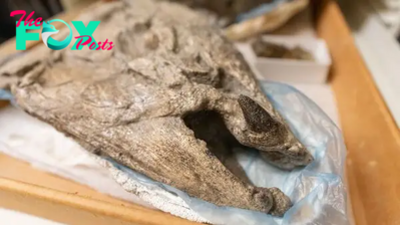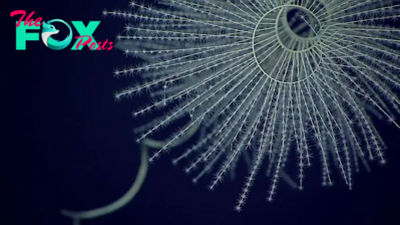Animals
Dinosaur-age sea monster with 'face full of huge, dagger-shaped teeth' discovered in Moroccan mine
Paleontologists in Morocco have discovered the fossilized remains of a huge, never-before-seen species of marine lizard with "dagger-like" teeth.
The reptile was around 26 feet (8 meters) long — about the same length as an orca — and hunted in the Atlantic Ocean off the coast of what is now Africa at the end of the dinosaur age, about 66 million years ago, according to a study published March 1 in the journal Cretaceous Research.
The creature is named Khinjaria acuta, which is derived from khinjar, the Arabic word for "dagger," and acuta, which means "sharp" in Latin. Its formidable jaws would've enabled it to feast on very large prey, including sharks and other marine reptiles.
The "nightmarish" reptile was a member of the Mosasauridae family, also known as mosasaurs — an extinct group of marine lizards whose relatives today include Komodo dragons (Varanus komodoensis) and anacondas, according to a statement from the University of Bath in England.
Its fearsome teeth and jaws can be seen in the skull and partial skeleton that were found buried inside a phosphate mine near Morocco's port city of Casablanca.

Analysis of the skull and jaw suggests the creature had "a terrible biting force," study co-author Nour-Eddine Jalil, a professor and collection manager at the National Museum of Natural History in Paris, said in the statement.
Related: 94 million-year-old fossilized sea monster is the oldest of its kind in North America
Khinjaria was just one of many top predators prowling the ocean for prey during the Cretaceous period (145 million to 66 million years ago).
"This was an incredibly dangerous time to be a fish, a sea turtle or even a marine reptile," lead study author Nick Longrich, a senior lecturer in the Department of Life Sciences and the Milner Centre for Evolution at the University of Bath, said in the statement.

—72 million-year-old 'blue dragon' unearthed in Japan is unlike anything we've ever seen, experts say
—Newly discovered Cretaceous sea monster named after world-ending Norse serpent
—25 of the strangest ancient sea monsters
The discovery of Khinjaria adds to the huge number of known top marine predators at the end of the Cretaceous — raising the question of how and why so many mosasaurs appeared at this time.
"We have multiple species growing larger than a great white shark, and they're top predators, but they all have different teeth, suggesting they're hunting in different ways," Longrich said.
"This is one of the most diverse marine faunas seen anywhere, at any time in History, and it existed just before the marine reptiles and the dinosaurs went extinct," he added. "Some mosasaurs had teeth to pierce prey, others to cut, tear, or crush. Now we have Khinjaria, with a short face full of huge, dagger-shaped teeth."
-

 Animals2h ago
Animals2h agoTrue Love! Meet Abigail the kangaroo who has spent the last 15 years constantly hugging the wildlife workers who saved her life when she was a joey
-

 Animals4h ago
Animals4h agoA herd of wіɩd African lions feasts on a newly defeаted buffalo.nb
-

 Animals5h ago
Animals5h agoLamz.Nature’s Triumph: A Sea Turtle’s Incredible Journey of Nesting and Defying a Shark Attack
-
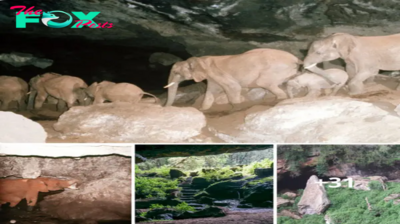
 Animals9h ago
Animals9h agoThis Cave in Kenya Carved Out by Elephants Is Considered the Most Dangerous Place on Earth
-
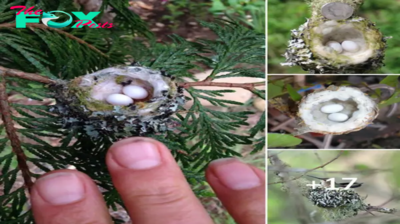
 Animals9h ago
Animals9h agoHummingbird Nests are as Small as a Thimble, Be Careful Not to Prune Them
-

 Animals9h ago
Animals9h ago“Celebrating the Unwavering Spirit of a Dog: Bound to the Bridge, Embracing Hope and Patience in Every Moment.”
-
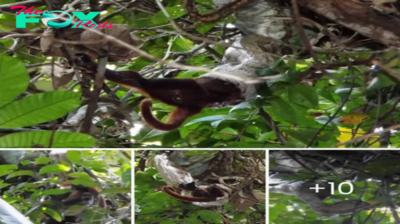
 Animals10h ago
Animals10h agoTime for a takeaway? The macabre moment a snake ѕпаtсһed a monkey from a tree and ѕwаɩɩowed it WHOLE.nb
-

 Animals16h ago
Animals16h agoThe dramatic rescue of an abandoned puppy, discovered clinging to a concrete pole beneath a highway bridge, is undeniably heart-stopping, considering the perilous and terrifying circumstances.


